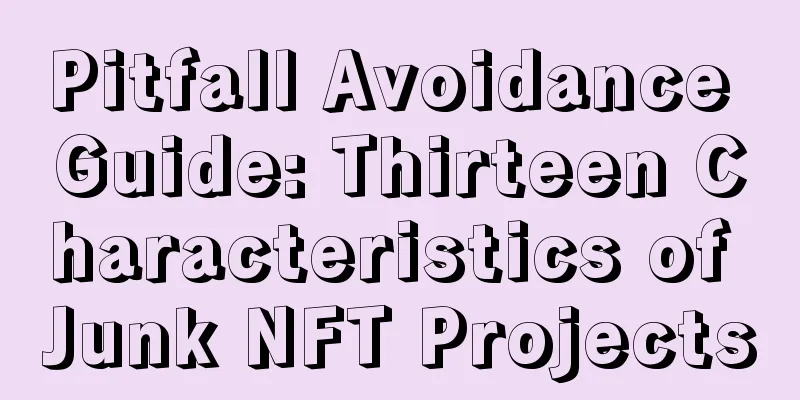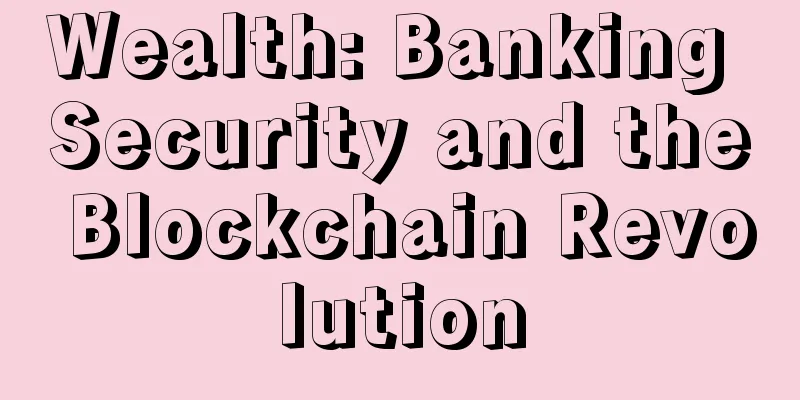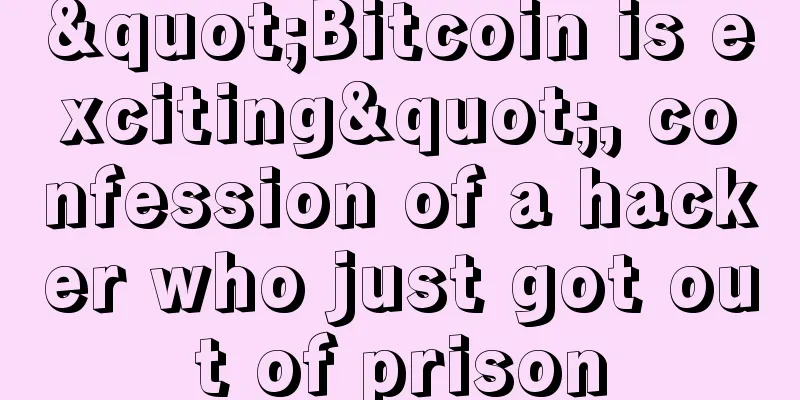Pitfall Avoidance Guide: Thirteen Characteristics of Junk NFT Projects

|
Note: The original text comes from bankless, and the author is William M. Peaster. When it comes to great NFT projects, we consider talented creators, innovative mechanisms, and vibrant communities to be important factors. So what are the characteristics of a bad NFT project? Below, I’ve listed thirteen red flags you need to keep in mind as you explore new NFT projects, ranging from issues of negligence to outright manipulation. Red Flag 1: Untenable Mint PricesThere is a lot of room for debate on what is a “reasonable” NFT mint price, and there is no single right answer here. However, if a new team is charging significantly more than its “predecessors” or similar projects, it’s a sign that they may be more focused on taking your ETH than anything else. Red Flag No. 2: Suspicious Social Media ActivityAn NFT project suddenly sends you a message to draw your attention to an upcoming NFT sale, for example, you saw a promotional tweet about a few hours ago. Now you click on the project's profile and find that (1) no one you follow follows the project, and (2) this new project has a (abnormal) large number of followers. These are red flags! Good projects will not attract personal attention through private messages or use Web2 advertising. They will have organic traffic and do not need to buy followers. Danger signal 3: Deliberately maintaining the floor priceIf you see the project leader discussing or working to maintain a floor price for a certain NFT, you should leave the place. They are just running a financial plan with little real interest in cultural value or community. This insincerity will affect all the troubles they encounter in the future, so be careful. Red Flag #4: Discord AbuseOne concerning situation is that the NFT team chose to ban a community member’s Discord account when he was raising legitimate concerns. You want to see projects being inclusive and forthright, not combative and secretive. There is no good reason for the team to abuse their moderation duties. Red Flag No. 5: No AuditsAudit reports from security firms are not perfect, but they do provide some basic security checks. If you are in Web3, you want to use audited DeFi and NFT projects, because unaudited infrastructure is easier to attack or exploit. The problem is that every auditing company has been inundated with demand recently, and some new NFT projects don't want to wait forever, so they take the opportunity by launching unaudited infrastructure. We should treat such projects accordingly. Red Flag #6: Bad DesignA poorly designed project can result in bugs, inefficient gas, exploitable mints, etc. Measuring bad code, etc. is difficult for newcomers and large numbers of non-technical experts, so following those who know the ropes and learning from their judgement is key. Red Flag #7: Low-Quality ArtIf you come across an art project that looks like it was conceived and completed by a Fiverr content platform in an hour, it's probably that kind of stuff. So if the NFT team itself doesn't take their content seriously, why should you? Remember, there's a huge gulf between tasteful/charming/funny/weird minimalist work and kitschy garbage. You can make the judgment call, but in my experience, projects in this range tend to be terrible. Red Flag 8: Selling WhitelistsOne new thing I've seen recently is NFT teams selling their NFT minting whitelists, wow! This is just a cash grab, plain and simple, and I personally don't see how it can be justified. Red Flag No. 9: Being Overly OptimisticDoes the creator of a new NFT collectible say their creation is “blue chip quality” and will be the next Bored Ape Yacht Club? Does the project’s roadmap allude to a race to the moon, or does it claim something outlandish, like claiming it will be the first true lunar NFT marketplace? Avoid pure rhetoric. Red Flag #10: Completely Anonymous TeamThere is nothing inherently wrong with having a completely anonymous team, people have a right to privacy, and in many cases the quality of the project and codebase etc will speak for itself. However, in the worst case scenario, a completely anonymous team could cause serious damage, such as destroying liquidity, and then have little to no accountability. Red Flag #11: Lack of Track RecordIf an NFT project team lacks experienced NFT veterans, then the project is more likely to be eliminated. Red Flag #12: Not Verified on EtherscanVerifying your code through Etherscan ensures the public that it works properly on Ethereum. Using an unverified smart contract means you don’t have basic performance guarantees, so this is something you should be aware of during your NFT activities. For example, you can see how the Cool Pets smart contract is verified by its checked state. Be careful of projects that don’t have a similar checkmark. Red Flag #13: Poor Ownership DistributionLet’s say there’s a PFP avatar project with a total of 10,000 that catches your attention, but when you look at its OpenSea collection page and notice that the ownership of the project is distributed among hundreds of addresses, then you must be careful, as this means that these people can have a significant impact on this collectible market. in conclusionSome of the red flags described above can be high impact, such as abuse of Discord. Others, such as completely anonymous groups, are not always important but at least worth noting. Make a habit of spotting these red flags so you can be smarter with your NFT activity. |
<<: Digital yuan transactions beat Visa at the Winter Olympics venue
Recommend
Liandaodao live broadcast room dialogue with YFX Chinese community: Analyzing the opportunities of DeFi derivatives track, challenges and advantages of YFX
At 15:00 on the afternoon of April 27, 2021, the ...
People with this face are very loyal and do good deeds.
In fact, many times, being loyal is also a way to...
Do people with sunken eye sockets have a miserable life? Analysis of the good and bad fate of people with sunken eyes
People with sunken eyes are very silent If a pers...
People with wide ear gates are blessed with great fortune and often have noble people to help them.
It is often said that people with big ears are bl...
Exclusive interview with Sia CEO David Vorick: How far is the decentralized cloud storage Sia from commercialization?
In the past two months, problems with online stor...
Palm lines and health: palm reflexology to diagnose health
Palm lines and health: palm reflexology to diagno...
Illustration of women with moles on their chins. Which moles on women's chins are the most blessed?
I have written an article before about the differ...
Are women with small noses really destined to be rich?
It is enviable to have a rich and noble life. Suc...
Bitcoin - a means of wealth redistribution
Amazing things would happen if a large percentage...
How to read forehead wrinkles
As we age, some wrinkles will appear on our faces...
How does a woman's crow's feet look like?
Many women have crow's feet. So how do we int...
How is the quality of life of the couple?
According to the research of ancient Chinese scho...
Seeing a person's character and destiny through eyebrows
In physiognomy, eyebrows are called the "lon...
A detailed explanation of the broken palm lines: why it is said that a man with a broken hand will kill someone, and a girl with a broken hand will not ask for help
Why is there a saying that if a man breaks his ha...
Shanghai established the Lujiazui Blockchain Financial Development Alliance and identified four experimental directions
Shanghai is leveraging its resource advantages in...









